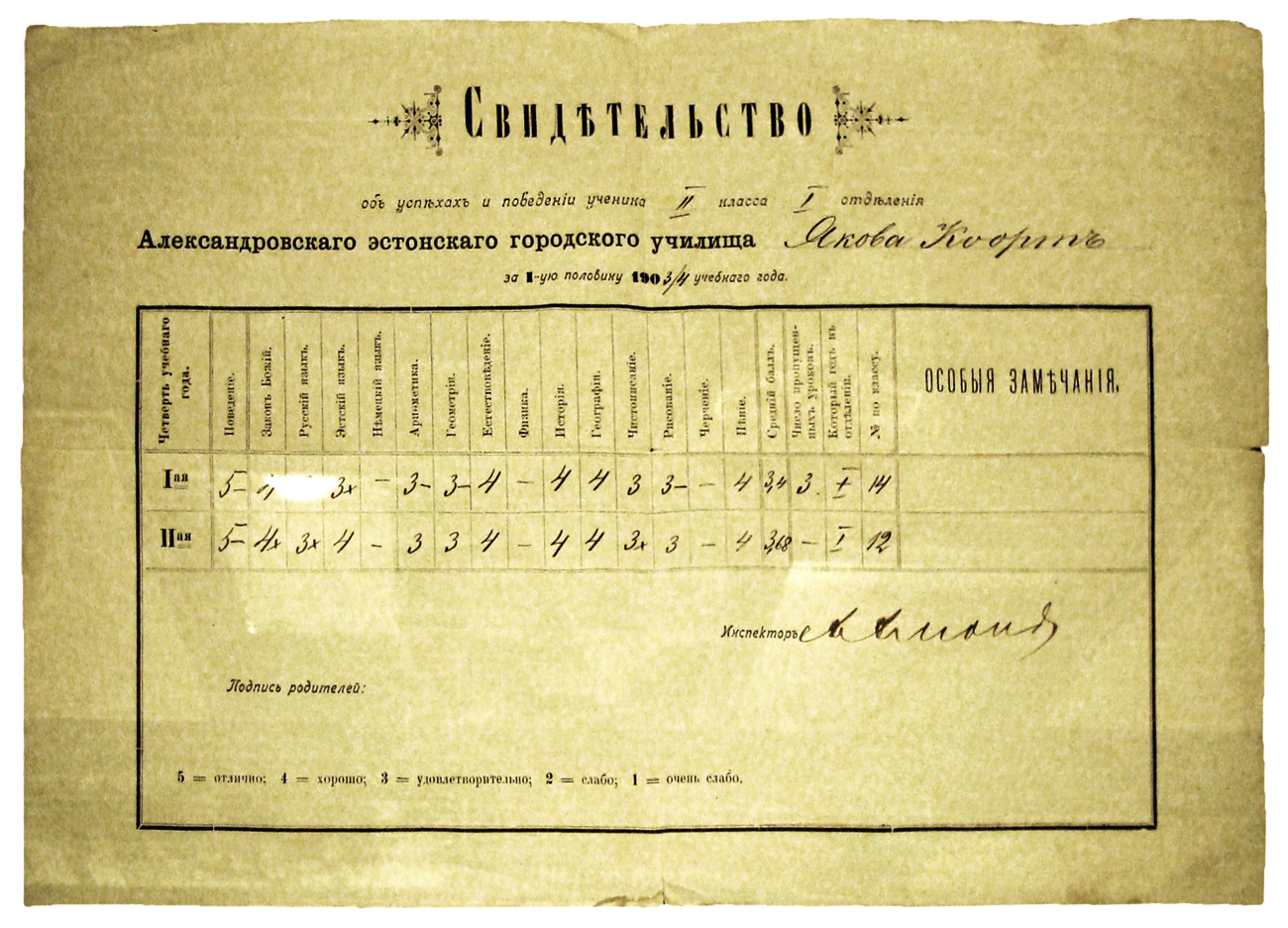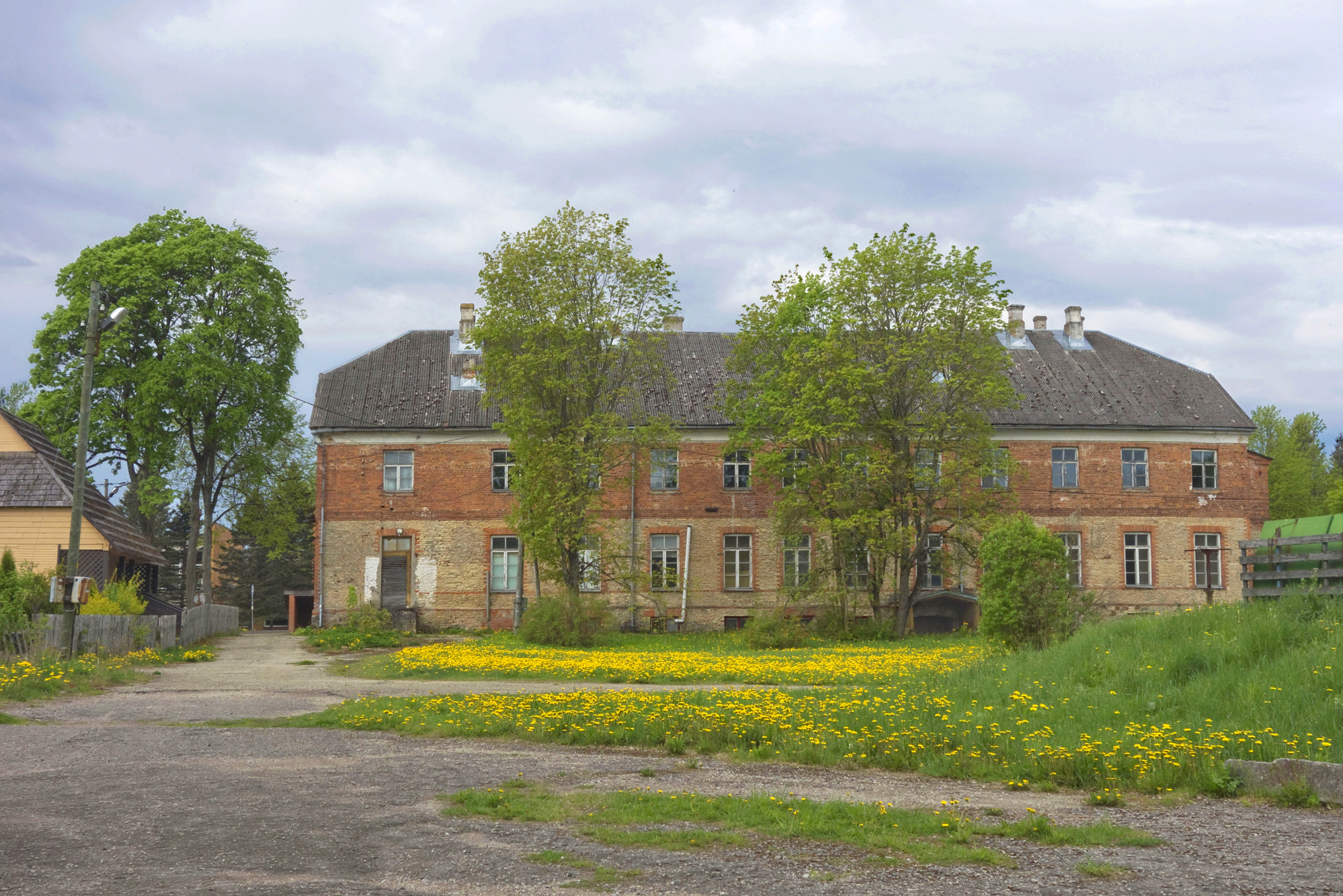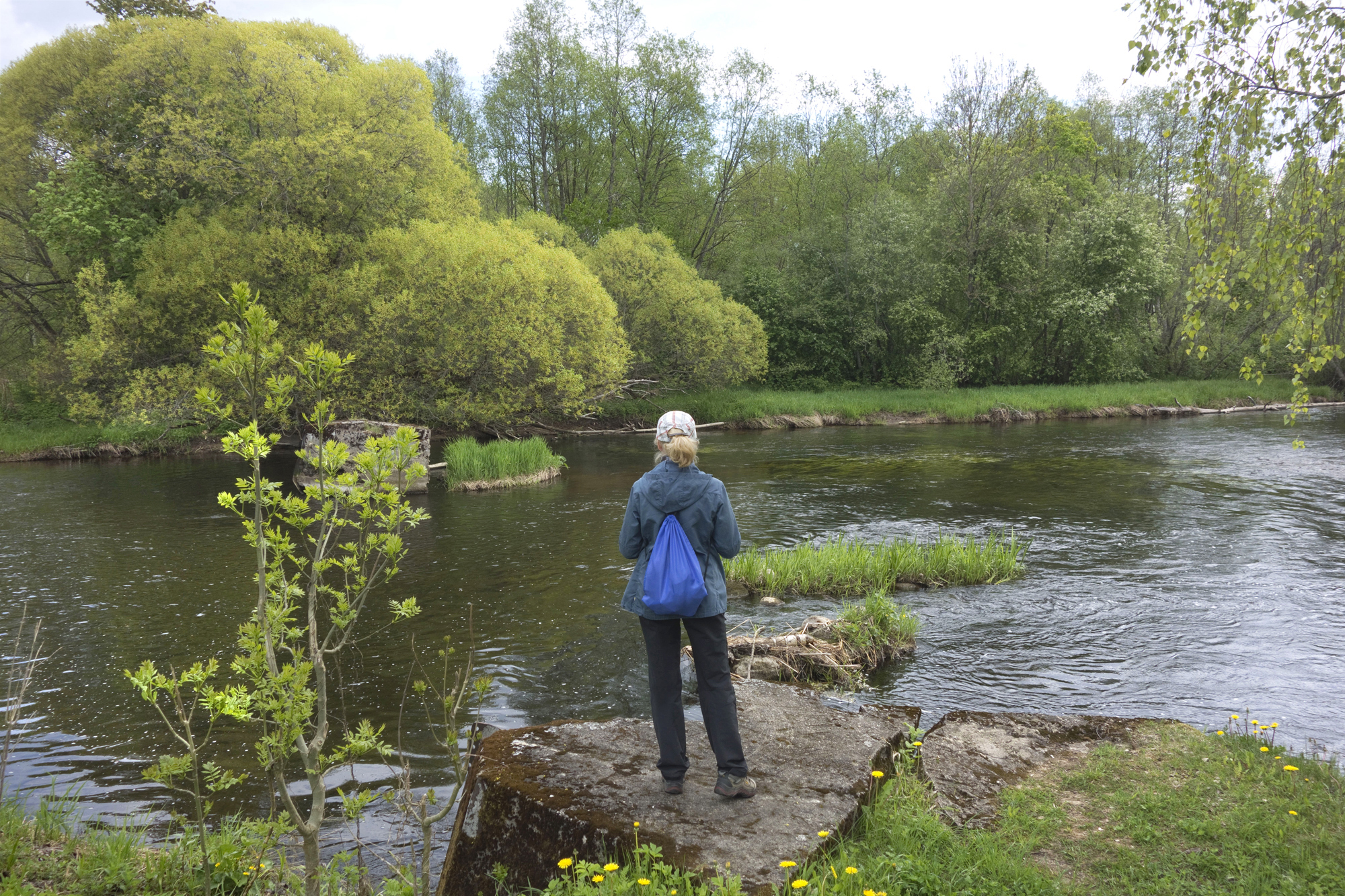Estonian Alexander School in Kaarlimõisa

We walk along Lossi street out of town towards the Alexander School located in Väike-Kamari village in Kaarlimõisa.
Kamari was mentioned in Polish historical records in 1583 (Kameri Male and Каmеrу Wielkie), the later German sources contain placenames Klein Kammer and Gross Kammer.
Kaarlimõisa was the cattle farm of Vana-Põltsamaa manor. Various enterprises operated here in the late 18th century, such as J. W. von Lauw’s copper mill, mirror grinding workshop and wool pre-shrinking workshop. Both banks of Põltsamaa river had a watermill, which empowered the machines of the factories. The mills have not survived.
There is a long-abandoned house in Kaarlimõisa in Väike-Kamari village that is quite important in our cultural history. In 1888 the Estonian Alexander School opened here. The school’s committee purchased the house in 1874; it had previously accommodated a boarding school for young noblemen.
Daila Aas, 2021
ESTONIAN ALEXANDER SCHOOL in KAARLIMÕISA
The idea of an Estonian Alexander School came from schoolteachers Jaan Adamson and Hans Wühner in Viljandi County in spring 1863. As people who highly valued education they found that the memory of Emperor Alexander I who freed the Estonians from serfdom can best be maintained by an Estonian-language higher educational establishment bearing his name. The idea found increasing support after the successful song festival in 1869. In the same year, the emperor gave permission to start raising money for the planned school.
On 7 July 1870, the conference organised by the enlightenment figures in Tarvastu decided to form the Main Committee of the Estonian Alexander School. Jakob Hurt, the chief ideologue of the national movement was the strongest supporter of the Estonian-language school of higher education.
The idea was first publicised in the newspaper Eesti Postimees in 1871. The same year Jakob Hurt published a booklet about the Alexander school where he explained the ideology of the school and offered specific advice about establishing sub-committees and raising money.
The purpose of the Alexander School committees across the country was to raise money. The main committee had to make sure that the money was used as planned. Both the committee and the sub-committees were also involved in discussions about Estonian national issues. The main committee has therefore been called „the first Estonian parliament”. At the heyday of the Alexander School movement in 1883 there were 139 sub-committees across Estonia plus 7 outside. In 1887, more than 104 000 roubles had been collected from people for the establishment of the a free higher Estonian-language school that would continue the parish school education.
However, time and circumstances dealt a blow to the Estonians’ aspirations. Rows and conflicts split the main committee and the wave of Russification directed to the border areas of the tsarist empire permitted one school to open in 1888 near the town of Põltsamaa in Kaarlimõisa, where teaching was done in Russian. It was officially called the Estonian Alexander Town School. It demanded fees, lasted 6 years and was for boys. The Estonian language was merely one subject among others.

The school was closed in 1906, because for the tsarist government its students were „rebels” or participants in the revolution of 1905. Next year, agricultural courses for a fee were allowed in the schoolhouse. In 1914 the Estonian Alexander Agricultural School opened in Kõo, which considered itself to be the successor of the Alexander School. After several reorganisations it is today called the Olustvere School of Service and Rural Economics.
New life began in the Alexander School building in Kaarlimõisa when Viljandi county government bought the house and opened the Põltsamaa Industrial School there in 1921. The school worked well, and in 1936 the three-year study period was extended to four years. The school flourished until 1940, when it had to go through new reorganisations.
Krista Aru, 2016



During the Soviet period Põltsamaa industrial school was changed to Kaarlimõisa vocational secondary school and then to vocational school. In 2015 the school was joined with Järvamaa Vocational Education Centre situated in Paide, and the building remained empty. The house has now been on the market for several years.
Daila Aas, 2021
Sources
https://www.poltsamaa.ee/ajalugu
https://et.wikipedia.org/wiki/P%C3%B5ltsamaa_j%C3%B5gi
https://www.folklore.ee/pubte/ajaloolist/poltsamaa_1/poltsamaa_1.html
https://et.wikipedia.org/wiki/Eesti_Aleksandrikool
https://agrt.emu.ee/pdf/1998_3_karelson.pdf
https://register.muinas.ee/public.php?menuID=monument&action=view&id=5859
https://weskiwiki.ee/index.php?curid=1028
